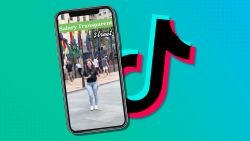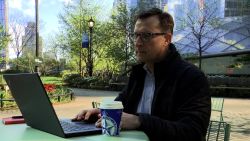A little more than a year ago, WeWork’s parent company, The We Company, filed to take the co-working company public.
But a lot has happened in the past 12 months.
This time last year, WeWork was busy trying to defuse investor concerns over its corporate governance structure. Its CEO stepped down, it postponed its IPO and received a bailout from Japanese conglomerate SoftBank.
And then a global pandemic hit, and further rattled the company.
“We saw a drop off in April and May,” said CEO Sandeep Mathrani, who joined the company in February.
But he said businesses have started to come back as companies seek out space to meet social distancing requirements and provide a place for remote workers to go.
So what’s next for WeWork?
Here’s what Mathrani had to say:
(This interview has been edited for length and clarity)
How has Covid-19 changed how WeWork does business?
In an ironic way, Covid actually brought to the forefront the value of flexibility. We were very quickly able to de-densify our common areas, our lounges, our office space. We were very quickly able to do deals with companies.
Effectively through the pandemic, but June specifically and July, leasing activity was almost equal to what it was in February pre-Covid.
If you look at all the tech companies, banking institutions, research firms, media companies, they sat in a very dense environment. They need to de-densify and a solution – until there is a vaccine – is in a company such as WeWork.
How many companies canceled their WeWork leases as a result of the pandemic?
The companies that were really small businesses that were month-to-month canceled their memberships.
Interestingly enough, in the month of August the small businesses have rebounded with new deals almost at 50% of the volume as in February, so that is pretty impressive.
Are you offering any perks or incentives to entice people to continue or renew their leases or start new ones?
We’ve offered All Access free to existing members.
And to win back those that left…we are offering two weeks of free All Access to come back into the office, and they can go visit any one of our 800 locations.
Financial institutions have come to us where they will want All Access and pay for 200 passes, and what that does is it effectively allows 200 people to use a WeWork whether in New York, London or anywhere in the world, and when the 201 person comes they can do one of two things: They can either say please limit to 200 people or if more than 200 people come they will pay us on a per diem basis.
We did launch a second product called On Demand, where you can actually come and rent an office by the hour, by the day or by the week. We’re piloting that in New York City and actually it’s performing better than our projections.
I think that the reason for that is a lot of people who want to leave their homes to get a reprieve, would have gone to a Starbucks or coffee shop and that is closed for them.
Which types of clients are looking to rent out office space right now?
About 75 to 90 days ago, we launched a vertical “We for Education.” It was triggered by a private high school in New York seeking space to de-densify and that led us to believe there was a real market with education institutions. We marketed to universities and completed many deals with universities, which is completely a new category for us. I would say there are about 100 or so universities that we are doing deals with around the world.
The second new vertical for us is life sciences. There is a burst in investment in life sciences and obviously their office space is bursting at the seams and they also need to de-densify, and in markets such as Boston, it is a core focus for us.
Are you thinking about expanding into more suburban areas if people are looking to work closer to home?
A few companies look at this opportunity to streamline their own real estate portfolio.
What we are not seeing is people sitting back and saying: ‘Lets do a hub and spoke model’ where the spokes are in suburbia’… I think it seems very unnatural. We’ve tried this, by the way, a financial institution asked us to look for a location in Connecticut and Long Island, which we did and effectively they couldn’t get a buy-in because people sat back and said: ‘Why would I Ieave my wonderful home with all the amenities?’ To go into an office where none of my colleagues are really going to be there because they are not in my same group. I don’t get that collaboration, that innovation, I may get a little bit of socialization, but I don’t see the purpose of doing that.’
We are going to selectively try a few locations to see what the demand will be. We are looking, for example, in Connecticut for a location.
What changes have you made to the physical spaces to adhere to the safety protocols?
All our common areas are completely de-densified with at least six feet of separation between people, even on our couches. All the dedicated desks are separated at least six feet apart. We’ve enhanced the cleaning and sanitization. We’ve changed the entire filtration system in all buildings with HEPA filters.
And actually it feels very safe when you come into the environment and people are very respectful. If you are in a common area, they wear masks. That is our protocol and people are abiding by that.
When did WeWork decide to go all remote and what was that shift like?
Obviously, we kept all our locations open through the difficult months because we have a lot of essential services that people provide from our locations. I found when I did get an opportunity to visit our locations, small businesses would come every day to get their mail. We didn’t need to staff to a level when we are completely full. Our community people were in the office and barring that, we worked from home.
When New York City opened up we started rotating 25% of our people per week, and post-Labor Day, I wont say 100% of people are in, but a good 75% of the people are coming into the office. But it was very strategic. We wanted to show people it was safe to come in and get their feedback. For a month, it was 25% a week. Then the second month it was 50% per week and post Labor Day, we provided space for 100% but I think about 70-odd percent.
What has been your biggest lesson learned since the pandemic started?
Increase communications with the workforce much more than you normally would. You have to care about people’s mental state. People are getting fatigued. You have to be respectful of people’s time. There was no boundary between house and work if you are working from home. We found a lot of people felt more exhausted and were burning out more. You have to be a lot more respectful. You have to be a lot more patient. Everything took longer to get done. And I think you have to have compassion and have a flexible mindset.


















